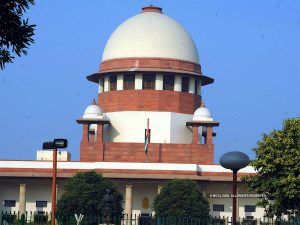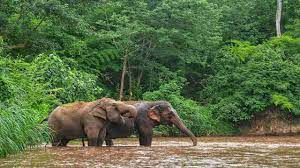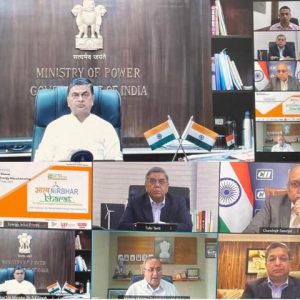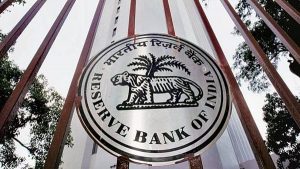Today Current Affairs: 19th July 2021 for UPSC IAS exams, State PSC exams, SSC CGL, State SSC, RRB, Railways, Banking Exam & IBPS, etc
Table of Contents
Adjournment Motion:

The Shiromani Akali Dal (SAD) has decided to move an adjournment motion in the Lok Sabha against the government on the three controversial farm laws, over which it walked out of the NDA government.
- The motion requires the signatures of 50 MPs to be admitted.
- The laws — the “Farmers’ Produce Trade and Commerce (Promotion and Facilitation) Act, 2020, the “Farmers (Empowerment and Protection) Agreement of Price Assurance and Farm Services Act, 2020 and the “Essential Commodities (Amendment) Act, 2020” were cleared by Parliament last year and have seen sustained protests from farmers groups at the doorstep of Delhi.
- While the Central government has held several rounds of talks, these have been unsuccessful at breaking the logjam, as the government has firmly refused to take back the Acts.
About Adjournment Motion:
- Adjournment motion is introduced only in the Lok Sabha to draw the attention of the House to a definite matter of urgent public importance.
- It involves an element of censure against the government, therefore Rajya Sabha is not permitted to make use of this device.
- It is regarded as an extraordinary device as it interrupts the normal business of the House. It needs the support of 50 members to be admitted.
- The discussion on this motion should last for not less than two hours and thirty minutes.
National Mission For Clean Ganga (NMCG):

The National Mission for Clean Ganga (NMCG) in its 36th Executive Committee has approved new projects for rejuvenation of six rivers in Uttarakhand.
- The projects shall cover the six polluted river stretches in the Kumaon region.
About the National Mission for Clean Ganga (NMCG):
- It was registered as a society on 12th August 2011 under the Societies Registration Act 1860.
- It acted as the implementation arm of National Ganga River Basin Authority(NGRBA) which was constituted under the provisions of the Environment (Protection) Act (EPA),1986.
- Please note, NGRBA was dissolved with effect from the 7th October 2016, consequent to the constitution of the National Council for Rejuvenation, Protection and Management of River Ganga (referred as National Ganga Council).
UDAN Scheme:

The government has announced new flights under the UDAN scheme to connect small cities with the metros.
- The flights utilises less used airports in the country and seeks to offer affordable flights to the people of the country.
- The Centre plans to operationalise 100 unserved and underserved airports and start at least 1,000 air routes under a regional connectivity scheme called UDAN scheme (Ude Desh Ka Aam Nagrik).
About UDAN Scheme:
- The scheme is aimed at enhancing connectivity to remote and regional areas of the country and making air travel affordable.
- It is a key component of Centre’s National Civil Aviation Policy led by Prime Minister Narendra Modi and launched in June 2016.
- Under the scheme, nearly half of the seats in Udan flights are offered at subsidised fares, and the participating carriers are provided a certain amount of viability gap funding (VGF) – an amount shared between the Centre and the concerned states.
- The scheme will be jointly funded by the central government and state governments.
- The scheme will run for 10 years and can be extended thereafter.
UDAN 4.0:
- The 4th round of UDAN was launched in December 2019 with a special focus on North-Eastern Regions, Hilly States, and Islands.
- The airports that had already been developed by Airports Authority of India (AAI) are given higher priority for the award of VGF (Viability Gap Funding) under the Scheme.
- Under UDAN 4, the operation of helicopters and seaplanes is also been incorporated.
Re-Wilding Of Abandoned Or Injured Animals Under The Lens.:

The recent attempt of Periyar Tiger Reserve (PTR) to reintroduce into the wild an abandoned nine-month-old cub named Mangala after rearing it in ‘captivity’ for two years has once again brought the controversial concept of ‘re-wilding’ of abandoned or injured animals under the lens.
- As per the Standard Operating Procedures/Guidelines laid down by the National Tiger Conservation Authority (NTCA) under Section 38(O) of The Wildlife Protection Act, 1972, there are three ways to deal with orphaned or abandoned tiger cubs.
- The first is to make an effort to reunite the abandoned cubs with their mother.
- Second, if a reunion of the cub with its mother is not possible, then shift the cub to a suitable zoo.
- Third, reintroduction of the cub into the wild after a certain time when it appears that the cub is capable of surviving in the wild independently. This is what is known as ‘re-wilding’.
- NTCA stresses that the tiger cub should be reared in an in situ enclosure for a minimum of two years, and during this time, each cub should have a successful record of at least 50 ‘kills’.
Kanwar Yatra:

The Supreme Court took suo motu cognizance of a report on the decision by the Uttar Pradesh government to allow Kanwar Yatra this year with certain restrictions, even as the Uttarakhand government had suspended the yatra amid fears of a possible Covid-19 outbreak.
- The Kanwar Yatra is a pilgrimage organised in the Hindu calendar month of Shravana (Saavan).
- Saffron-clad Shiva devotees generally walk barefoot with pitchers of holy water from the Ganga or other holy rivers. Devotees carry the pitchers of holy water on their shoulders, balanced on decorated slings known as Kanwars.
- In the Gangetic plains, the water is taken from pilgrimage sites such as Haridwar, Gaumukh and Gangotri in Uttarakhand, Sultanganj in Bihar, and Prayagraj, Ayodhya or Varanasi from Uttar Pradesh.
- The water is used by the pilgrims to worship Shiva lingas at shrines of importance, include the 12 Jyotirlingas, or at certain specific temples such as the Pura Mahadeva and Augharnath Temple in Meerut or even in the devotee’s own village or town.
- This form of Shiva worship has special significance in the areas around the Ganga. An important festival with similarities to the Kanwar yatra in North India, called the Kavadi festival, is celebrated in Tamil Nadu, in which Lord Muruga is worshipped.
Doppler Radar:

The India Meteorological Department’s (IMD) only Doppler radar in Mumbai, which surveys weather patterns and forecast, stopped working again , when the city was witnessing rainfall.
- In radars, a beam of energy– called radio waves– is emitted from an antenna. When this beam strikes an object in the atmosphere, the energy scatters in all directions, with some reflecting directly back to the radar.
- The larger the object deflecting the beam, the greater is the amount of energy that the radar receives in return.
- Observing the time required for the beam to be transmitted and returned to the radar allows weather forecasting departments to “see” raindrops in the atmosphere, and measure their distance from the radar.
Hubble Space Telescope:

NASA plans to fix a glitch that has stopped the Hubble space telescope from being used for science work for more than a month.
- The malfunction has been described as the most serious problem in a decade to face the legendary observatory, which is currently running in “safe mode”.
- The Hubble, launched in 1990, is considered by many to be the most important scientific tool ever to be built, having churned out more than 15 lakh observations that have been used to publish around 18,000 research papers.
- Named after the astronomer Edwin Hubble, the observatory is the first major optical telescope to be placed in space and has made groundbreaking discoveries in the field of astronomy since its launch.
- According to NASA’s official website, the launch and deployment of Hubble in April 1990 is said to be the “most significant advance in astronomy since Galileo’s telescope.”
- It is larger than a school bus in size, has a 7.9 feet mirror, and captures stunning images of deep space playing a major role in helping astronomers understand the universe by observing the most distant stars, galaxies and planets.
Environment Ministry’s Memorandum Stayed:

The Madurai Bench of the Madras High Court has granted an interim stay on the operation of an office memorandum issued by the Ministry of Environment, Forest and Climate Change.
- The memorandum provided a procedure for the grant of post facto clearance to projects that have come up without environmental clearance under the Environmental Impact Assessment (EIA) notification, 2006.
- Environmental Impact Assessment (EIA) notification, 2006 mandated prior clearance, and there was no provision for the grant of post facto clearance under the EIA notification.
- The memorandum provided a backdoor entry to violators.
- By way of the memorandum, violators of the EIA notification could obtain clearance and regularise violations.
- The ex-post facto clearance is also alien to the environmental jurisprudence.
- It was also against the principles of natural justice, and the right of the people to participate in environmental decision-making.
- It was also violative of the Environment (Protection) Act, 1986.
About EIA:
- The EIA was an important tool to ensure the optimal use of natural resources for sustainable development.
- Its purpose was to identify, examine, assess and evaluate the likely and probable impact of a proposed project on the environment.
- Under the Environment (Protection) Act, 1986, India notified its first EIA norms in 1994, setting in place a legal framework for regulating activities that access, utilise, and affect (pollute) natural resources.
- Every development project has been required to go through the EIA process for obtaining prior environmental clearance ever since.
- The 1994 EIA notification was replaced with a modified draft in 2006.
Conference On Aatmairbhar Bharat :Self Reliance for Renewable Energy Manufacturing:

Confederation of Indian Industry (CII) had recently organised a conference on “Aatmairbhar Bharat – Self Reliance for Renewable Energy Manufacturing”.
- India had one of the fastest rates of growth of Renewable Energy capacity in the world.
- It had pledged in COP-21 in Paris that by 2030; 40% of its power generation capacity will be from non-fossil fuel sources.
- It has set a target of 450 GW of Renewable Energy capacity by 2030.
- It had achieved universal access by connecting every village and every hamlet under Deen Dayal Upadhyay Gram Jyoti Yojana Scheme and connecting every household under Saubhagya Scheme. It was the fastest and the largest expansion of access in the world.
- India has already touched 200 GW of demand even when the effects of COVID-19 were still there.
- India will also emerge as a leader in Green Hydrogen and Green Ammonia.
Deen Dayal Upadhyay Gram Jyoti Yojana Scheme:
- The erstwhile Rajiv Gandhi Grameen Vidyutikaran Yojana (RGGVY) scheme for village electrification and providing electricity distribution infrastructure in the rural areas has been subsumed in the DDUGJY scheme.
- Nodal agency for implementation: Rural Electrification Corporation Limited (REC).
Saubhagya scheme:
- Pradhan Mantri Sahaj Bijli Har Ghar Yojana (PM Saubhagya) was launched in September 2017 with a target to electrify all households by December 2018.
- This target was moved forward to March 31, 2019, and eventually the Centre declared that all ‘willing’ homes have been provided with electricity connections.
Fit for 55 Package: EU:

The European Commission unveiled its ‘Fit for 55’ package of revised climate and energy laws on 14 July – aiming to align key EU policies with the new 55-percent net-emissions reduction by 2030.
Key features:
- Cars with internal combustion engines will disappear from European showrooms by 2035.
- Steel producers and cement makers will pay for every ton of carbon dioxide their factories emit.
- Cargo ships may not be able to dock in ports like Rotterdam, Netherlands, or Hamburg, Germany, unless they run on cleaner fuels. Commercial airliners will be required to fill up with synthetic fuel produced with green energy.
- The European Union’s plan to cut its greenhouse gas emissions by more than half by the end of the decade will touch almost every industry in the trade bloc, with profound consequences for jobs and the bloc’s economy.
Foreign Card Payment Network Companies Barred: RBI

The Reserve Bank of India (RBI) has barred three foreign card payment network firms – Mastercard, American Express and Diners Club — from taking new customers on board over the issue of storing data in India.
- As many as five private sector banks, including Axis Bank, Yes Bank, and IndusInd Bank, are to be impacted by the RBI’s decision.
- The Personal Data Protection Bill also has provisions pertaining to ‘data localisation’
RBI’s Circular on Data Storage-April 2018:
- All system providers were directed to ensure that within six months the entire data (full end-to-end transaction details, information collected or carried or processed as part of the message or payment instruction) relating to payment systems operated by them is stored in a system only in India.
- They were also required to report compliance to the RBI and submit a board-approved system audit report conducted by a Computer Emergency Response Team – India (CERT-IN) empanelled auditor within the timelines specified.
- Payment firms like Visa and Mastercard, which currently store and process Indian transactions outside the country, have said their systems are centralised and expressed the fear that transferring the data storage to India will cost them millions of dollars.
- Once it happens in India, there could be similar demands from other countries, upsetting their plans.
- While the Finance Ministry had suggested some easing of norms in transferring the data, the RBI has refused to change, stating that the payment systems need closer monitoring in the wake of the rising use of digital transactions.
Women’s Reservation Bill:

A political party has raised the demand of bringing the long-pending Women’s Reservation Bill to Parliament, ahead of the monsoon session.
- The Bill was introduced in the Rajya Sabha in May 2008 and was referred to a standing committee. In 2010, it was passed in the House and transmitted finally to the Lok Sabha. However, the Bill lapsed with the 15th Lok Sabha.
- The original idea for this bill originated from a constitutional amendment which was passed back in 1993.
- The constitutional amendment stated that a random one third of village council leader, or Sarpanch, positions in the gram panchayat should be reserved for women.
- The Women’s Reservation Bill was launched as a long term plan to extend this reservation to Lok Sabha and state legislative assemblies.
- The bill seeks to reserve 33% seats in Lok Sabha and all state legislative assemblies for women.
- Reserved seats may be allotted by rotation to different constituencies in the state or union territory.
- Reservation of seats for women shall cease to exist 15 years after the commencement of this Amendment Act.
Kisan Sarathi:

The Indian Council of Agriculture Research (ICAR) celebrated its 93rd foundation day and on the occasion, the Kisan Sarthi platform was launched.
- It was jointly launched by the Union Minister for Agriculture and Farmers’ Welfare and the Union Minister of Electronics & Information Technology.
- It is a digital platform to facilitate farmers to get ‘right information at right time’ in their desired language.
- It will help farmers to interact and avail personalised advisories on agriculture and allied areas directly from the respective scientists of Krishi Vigyan Kendra (KVKs).
- Farmers can also learn new farming methods using it.
Krishi Vigyan Kendra:
- It is an agricultural extension center in India. Usually associated with a local agricultural university, these centers serve as the ultimate link between the ICAR and farmers, and aim to apply agricultural research in a practical, localized setting.
- It is an integral part of the National Agricultural Research System (NARS).
- The first KVK was established in 1974 at Puducherry.
- The mandate of KVK is technology assessment and demonstration for its application and capacity development.
- KVKs also produce quality technological products (seed, planting material, bio-agents, livestock) and make it available to farmers.
- The KVK scheme is 100% financed by the Government of India and the KVKs are sanctioned to Agricultural Universities, ICAR institutes, related Government Departments and Non Government Organizations (NGOs) working in Agriculture.
- KVKs act as a bridge between the laboratories and farmland. According to the Government, these are crucial to fulfilling the target of doubling farmers’ income by 2022.
UMANG App:

The Ministry of Electronics & Information Technology (MeitY) has enabled map services in UMANG (Unified Mobile Application for New-age Governance) App.
- Citizens will be able to find government facilities nearest to their location, such as mandis, blood banks and also be able to see these on the most detailed and interactive street and village level maps of India (built by MapmyIndia company).
- The UMANG mobile app is a Government of India all-in-one single, unified, secure, multi-channel, multi-lingual, multi-service mobile app.
- It provides access to high impact services of various organizations of Centre and States. Presently it has 2000+ services.
- The aim of UMANG is to fast-track mobile governance in India.
- UMANG enables ‘Ease of Living’ for Citizens by providing easy access to a plethora of Indian government services ranging from – Healthcare, Finance, Education, Housing, Energy, Agriculture, Transport to even Utility and Employment and Skills.
- The key partners of UMANG are Employee Provident Fund Organization, Direct Benefit Transfer scheme departments, Employee State Insurance Corporation, Ministries of Health, Education, Agriculture, Animal Husbandry and Staff Selection Commission (SSC).
- UMANG was developed by the National e-Governance Division (NeGD), Ministry of Electronics & IT.
- It is a ‘Digital India’ initiative.
- The international version called ‘UMANG International’ was launched in 2020 to mark three years of UMANG.
- The international version is for select countries that include USA, UK, Canada, Australia, UAE, Netherlands, Singapore, Australia and New Zealand.
- It will help Indian international students, NRIs and Indian tourists abroad, to avail Government of India services, anytime.
- It will also help in taking India to the world through ‘Indian Culture’ services available on UMANG and create interest amongst foreign tourists to visit India.
- UMANG attained ‘Best m-Government service’ award at the 6th World Government Summit held at Dubai, UAE in February 2018.




